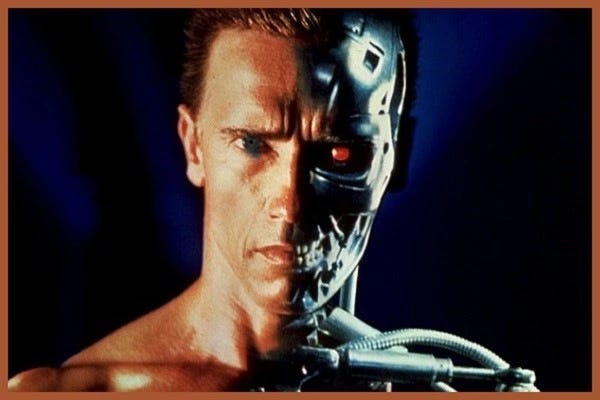The Anthropomorphization of Ai
TODAY'S POPULAR DISCUSSIONS ABOUT ARTIFICIAL INTELLIGENCE AND Ai ARE RIFE WITH SCIENCE FANTASY AND LACK ANY CREDIBLE PHILOSOPHY OF MIND
The widespread tendency, even within AI, to anthropomorphize machines makes it easier to convince us of their intelligence. How can any putative demonstration of intelligence in machines be trusted if the AI researcher readily succumbs to make-believe?― Diane Proudfoot, Dept of Philosophy and the Turing Archive for the History of Computing, University of Canterbury, NZ, Elsevier 2011
When 2001: A Space Odyssey arrived on the movie scene in 1968, the spaceship's fictional central controller, a HAL 9000 (Heuristically programmed ALgorithmic) computer, was given a soft, calm but oddly menacing and distinctively non-human voice. Sci-Fi author Arthur C. Clarke and movie director Stanley Kubrick clearly wanted their audience to make no mistake, HAL might be artificially intelligent, but he (it) was nevertheless a machine. Indeed, that was part of what made HAL so menacing.
In the intervening half-century since the premiere of that film, the lesson was clearly not lost on denizens of research and development in artificial intelligence. For they expend a lot of effort these days in creating machine speech that sounds as human as possible. All while the marketers of Ai apps and devices choose human-sounding names like Alexa, John Paul, Siri, and Watson. Why, do you think that is so?
The easy answer is to make their audio output sound more human and, yes, less foreign and possibly menacing. But I don't really think so. I submit instead that the objective is to bolster the appearance of human-like intelligence ― which is, in fact, at this point in time, significantly lacking.
An example I often use in my classes ... is the Kiva system — the multi-robot system doing fulfillment processing in warehouses. Amazon.com uses these robots to bring shelves to the people who pack the boxes after you order something from Amazon.
― Peter Stone, computer scientist, University of Texas at Austin, 2015
The narrative describing the Kiva robots that aid in warehouse order fulfillment operations is imbued with humanbistic adjectives and overtones, as is the explanation of how it all works. The robots are referred to in terms more appropriately applied to humans and which terms are prima facie not applicable in this situation ― because they are words that imply purposeful action, the exercise of judgment, and intentional decision-making. Note also how these robots are described in terms that imply artificial intelligence, that is, thinking when nothing about this situation evidences any genuine intelligence whatsoever on the part of the robots. And finally, notice how some trick photography is inserted that shows "pick and ship" personnel holding out their hands while having the merchandise items appear magically ― no doubt to bolster the feeling of wonderment we're all invited to experience when confronted with the purported marvels of Ai.
This, however, is a case into which wonderment should not enter. It is actually about a warehouse divided into discrete locations laid out on a grid and assigned a number. The locations are no doubt uniquely specified by an x-axis value and a y-axis value. There are pathways left clear for major robot traffic, again designated by X-Y coordinates, and the robots are built sufficiently short to be able to pass under the lower shelves of the inventory "pods", which they pick-up and carry to "pick" stations, where a human worker removes the required item of merchandise from the shelves of the pod, packs it, and forwards it for shipping.
The system's memory tracks where the inventory pods are at any given time, and what inventory remains on each pod at any given time. Making it a larger, but not much more complicated version of the "Traffic Jam" game.
Yet, there is a concerted effort to make it appear much more "intelligent" than it is. And the primary tactic is to anthropomorphize the robots ― attribute to them purposeful action ― rather than recognize them for what they are, essentially dumb machines acting in accord with electronic instructions to move along pre-mapped pathways to given X-Y coordinates on a grid.
When you start paying close attention to the contemporary discussion of Ai, you find it replete with similar examples of projecting "intelligence" into robotic actions that are clearly non-intelligent in any meaningful sense of the term.
― Phil Friedman
Copyright © 2017 - 2023 by Phil Friedman — All Rights Reserved
Notes: This article is one in a five-part series, first published in 2017 — at the beginning of my seven year tenure in the intellectual gulag of those who doubted the hyperbole spouted by the Prophets of Ai. To find the other four articles in the series, go to: Show Me the Intelligence.
An earlier version of this piece appeared on beBee.com 2017.



